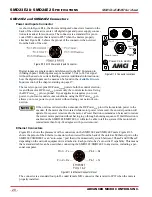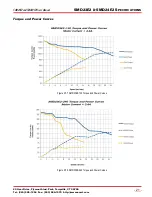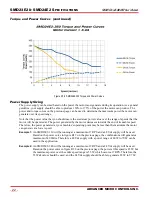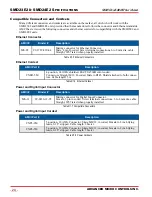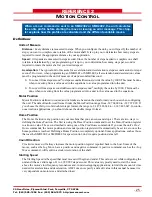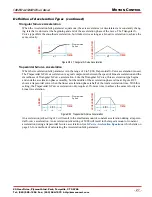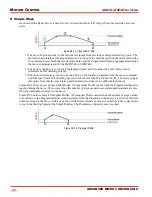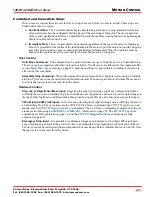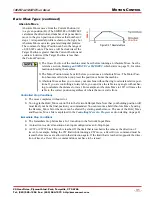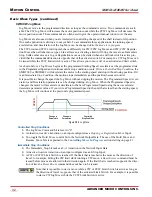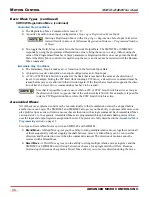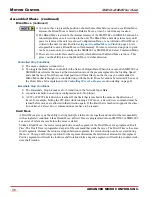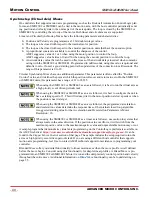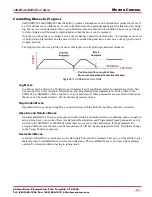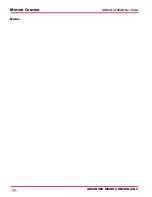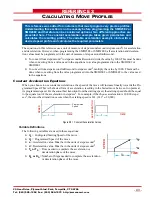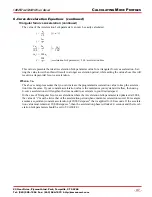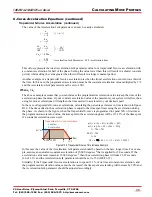
M
OTION
C
ONTROL
SMD23E2 and SMD24E2 User’s Manual
ADVANCED MICRO CONTROLS INC.
34
Basic Move Types (continued)
CW/CCW Registration Move (continued)
Controlled Stop Conditions
The Registration Move Command bit is reset to “0”.
A positive transition on an input configured as a
Stop Jog or Registration Move
Input.
Starting a Registration Move with a
Stop Jog or Registration Move
Input in its active
state will result in a move of (
Minimum Registration Distance
+
Programmed Number
of Steps
).
You toggle the Hold_Move control bit in the Network Output Data. The SMD23E2 or SMD24E2
responds by using the programmed Deceleration value to bring the move to a stop, without using the
value of the Programmed Number of Steps parameter. A Registration Move does not go into the Hold
State if the Hold_Move control bit is used to stop the move and it cannot be restarted with the Resume
Move command.
Immediate Stop Conditions
The Immediate_Stop bit makes a 0
1 transition in the Network Input Data.
An inactive-to-active transition on an input configured as an E-Stop Input.
A CW or CWW Limit Switch is reached. If the limit that is reached is the same as the direction of
travel, for example, hitting the CW limit while running a CW move, a
Reset Errors
command must be
issued before moves are allowed in that direction again. If the limit that is reached is opposite the direc-
tion of travel, a
Reset Errors
command does not have to be issued.
Note that it is possible to
start
a move while a CW or CCW Limit Switch is active as long as
the direction of travel is
opposite
that of the activated Limit Switch. For example, it is possible
to start a CW Registration Move while the CCW Limit Switch is active.
Assembled Moves
All of the moves explained so far must be run individually to their completion or must be stopped before
another move can begin. The SMD23E2 and SMD24E2 also gives you the ability to pre-assemble more com-
plex profiles from a series of relative moves that are then run with a single command. Each Assembled Move
can consist of 2 to 16 segments. Assembled Moves are programmed through a hand shaking protocol that
uses the input and output registers assigned to the unit. The protocol is fully described in the
section on page 38.
Two types of Assembled Moves exist in an SMD23E2 and SMD24E2:
Blend Move -
A Blend Move gives you the ability to string multiple relative moves together and run all
of them sequentially without stopping the shaft between moves. A Blend Move can be run in either
direction, and the direction is set when the command is issued. The direction of motion cannot be
reversed with a Blend Move.
Dwell Move -
A Dwell Move gives you the ability to string multiple relative moves together, and the
SMD23E2 or SMD24E2 unit will stop between each move for a programed
Dwell Time
. Because
motion stops between each segment, a Dwell Move allows you to reverse direction during the move.

